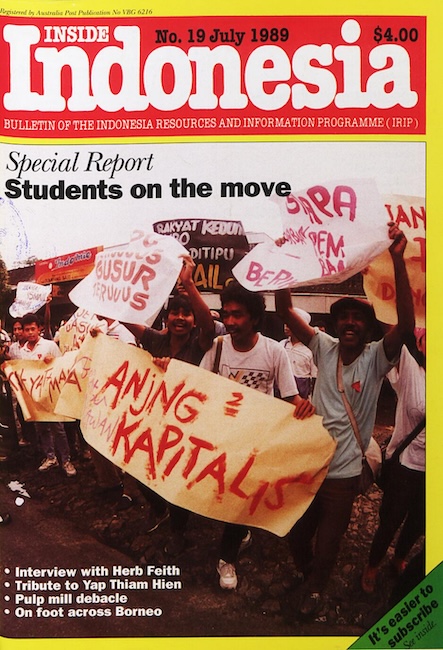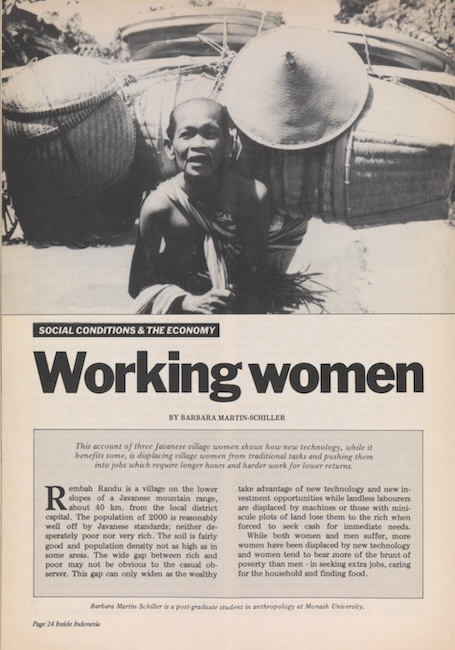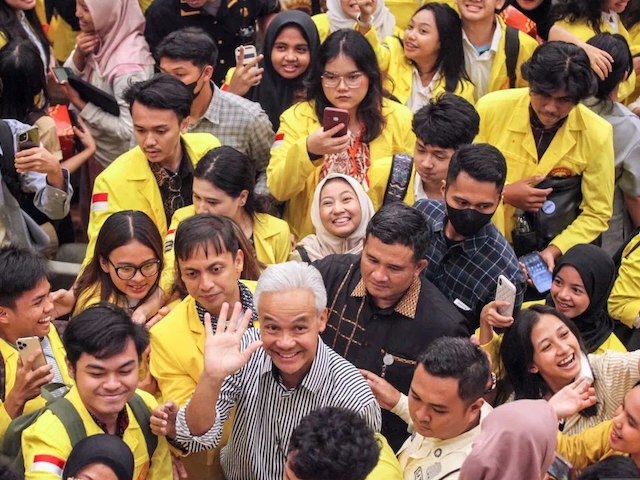Inside Indonesia explores defiant youth culture
Annisa R. Beta
Versi Bh. Indonesia
Indonesia's youth, as portrayed in Inside Indonesia's four-decade-long exploration, are nothing short of spectacular. They exhibit a unique blend of qualities that makes them captivating subjects. They are defiant and revolutionary, pushing the boundaries of established norms and social expectations. They are creative, many fearlessly advocating for groundbreaking ideals and initiatives; their influence undeniably permeates and shapes Indonesia’s contemporary culture. Yet they continue to navigate a precarious life filled with uncertainties that are unfortunately characteristic of their generation.
This essay revisits only some of Inside Indonesia’s extensive coverage of the lives of young Indonesians. It reflects on the relevance of the analysis, and encourages deeper engagement with kaum muda (the youth).
Revolutionary
An exploration of the spectacles of Indonesian youth cannot begin without noting their critical role in the country’s political shifts. The determination and uprising that define young people in Indonesia go beyond a simple inclination for rebellion; it is evidence of their strong longing for transformation. They challenge not only the limitations imposed by their society but also those of their own situation.
Inside Indonesia’s special report on ‘Students on the move’ published in 1989 earmarked the moment when the anti-Suharto sentiment intensified amongst the young. It manifested in the mushrooming of discussion groups and social organisations, slowly forming what Max Lane called “another process of rebuilding a political alternative based on people.” And, as we now know, that rebuilt civil society played a role in driving the New Order away from power, leading to Reformasi.

Moments when young people take to the streets, demanding changes from the government, reverberate throughout Indonesia’s history. But beyond analyses of young people’s more spectacular street protest performances (which Inside Indonesia has done really well), I want to highlight the magazine’s excellent work in showcasing how young people navigate precarity in their everyday life.
Precarious
In her article, ‘Working Women’, published in the very first issue of Inside Indonesia in 1983, Barbara Martin-Schiller recounts the story of Riati, a young woman from a Javanese village named Rembah Randu, who moved to Jakarta. Riati's move reflected the larger social changes driven by the influx of new technology and capital. She initially found employment as a servant with a family in Jakarta. Then, compelled by the experiences of friends working in clothing factories, she returned to her village to take sewing lessons. The allure of better pay and more freedom was strong. Riati envisioned a return to Jakarta, possibly seeking employment in a clothing factory, or establishing her own sewing business.
In the four decades since the publication of that article, many aspects of the youthful aspirations for a brighter future, as exemplified by Riati's story, have persisted. The intensifying flow of new technology and capital has made the stories of Indonesian young people more intriguing, and added layers of complexity.

Ariane Utomo, Iwu Utomo, and Peter McDonald write that today many would like us to believe the average young person ‘is an upper middle class city-dwelling tertiary graduate (most likely living in Jakarta); looking for work with a relatively high starting salary in the creative or digital sector; changing jobs every year because they want to travel; and spending their days leisurely sipping an artisan latte in an instagrammable café, daydreaming about running the Tokyo marathon as they swipe their phone. Nothing could be further from reality.’ Instead, they uncover a significant number of young people who are facing financial difficulties, while only a small minority have the opportunity to pursue higher education.
And yet, many of us would still like to believe that the youthfulness of Indonesia's population directly equates to their individual capacity to create a better future for themselves. The forthcoming 2024 General Elections marks the quinquennial appeal of young people as a potential population to those interested in power. Gen-Z is now included in every campaign team’s strategy. And there remains a belief that young people’s tech-savviness and supposed easier access to education and jobs means they should be able to lift themselves up without much help.
Creative remaking
This is not to say Indonesian young people are not creative, nor are they incapable of surviving the economic instability, political uncertainties, and environmental challenges that have been structurally posed upon them. Responding to the lack of support from the government, young entrepreneurs created Bagi Rata (Share Alike). Understanding that the upcoming General Elections will be filled with misinformation, others set up Bijak Memilih (Choose Wisely).
Yet, for all their defiance and creativity, Indonesian youth continue to grapple with precarity and lack of support. Perhaps it is time we pay greater attention to what young people need and what they do to change Indonesia for the better in their own terms.
I recommend recognising and supporting the active role of young people in shaping and contributing to knowledge production, particularly within the evolving landscape of digital and alternative political and knowledge circles in Indonesia.

Instagram and Twitter, as much as they are minefields of hoaxes and disinformation campaigns, host tens, if not hundreds, of youth-led and youth-focused groups and collectives. These organise events, trainings, and classes. Almost daily they post explainers of critical ideas about the future of Indonesia. Feminist accounts are perhaps the most visible. Of note are Lingkar Studi Feminis (Feminist Study Circle), Be With You, PurpleCode, Magdalene, Konde, to mention only a few. The popularity of Project Multatuli, Lingkar Studi Filsafat Cogito, and IndoPROGRESS signifies a moment of increased interest in left-leaning and progressive ideas. Adultism in academia and in many public discussions often dismisses these social media, suggesting they might be popular but have little meaning in relation to 'real' and 'serious' social change. This is why I suggest recognition of youth's active role in rethinking knowledge production and dissemination is a bare minimum.
Inside Indonesia could facilitate this further by encouraging intergenerational collaboration. The magazine's significant influence among readers in Australia, Indonesia, and beyond has the potential to connect older generations who may overlook youth perspectives and younger individuals advocating for change. It has the potential to foster dialogue, mutual understanding, and collaboration, creating a space for more inclusive knowledge production. The magazine could even perhaps create a specific section for youth contributors, giving space for their creative outputs.
More space to share their ideas with minimal mediation by older adults – the need is urgent. There are layered differences amongst the youth – of gender, sexualities, ethnicity, class, location, educational backgrounds, and many others. Inside Indonesia could acknowledge that and still facilitate – celebrate! - Indonesian young people’s engagement with each other. That would also, hopefully, raise the bar for studies about young people in Indonesia.
Annisa R. Beta (annisa.beta@unimelb.edu.au) is an ARC DECRA Fellow at The University of Melbourne.












